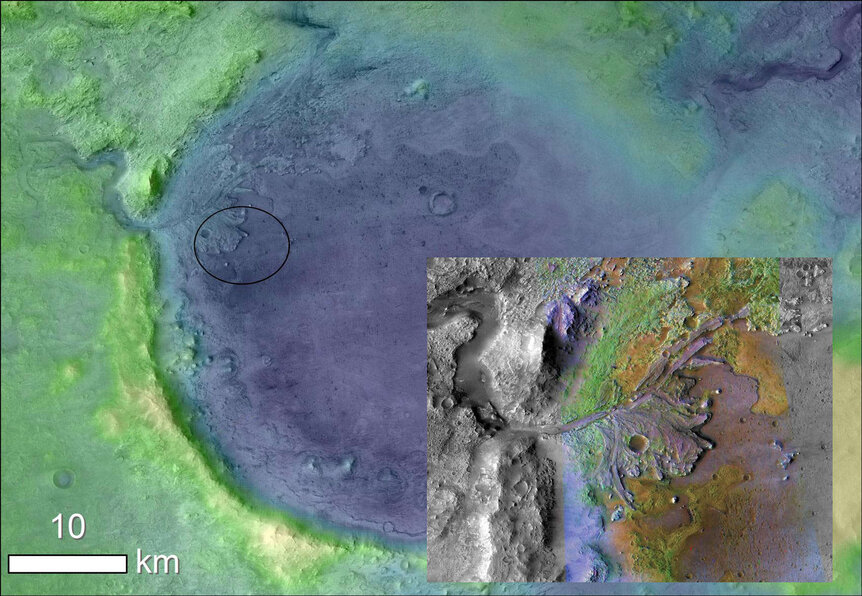Create a free profile to get unlimited access to exclusive videos, sweepstakes, and more!
The Dead Red Planet Part 1: If ancient Mars had oceans, where exactly were they?
New data casts doubt on purported shorelines.

We know that Mars had liquid water on its surface long ago.
The evidence for it is overwhelming; both the Curiosity and Perseverance rovers are in craters that used to be lakes, and there’s clear evidence for river channels carved into the Martian rock. And there’s water on Mars now, though locked up as ice at its poles and beneath the surface at mid-latitudes.
This means that in the past, Mars had a decent atmosphere — or else the water would have boiled away, since water turns to vapor at lower temperatures when the air is thinner — and was warmer than today. Two big questions have been raised from this inference: If it had water in the past, were there oceans on its surface, and what happened to the planet to cause such a massive change?
Let’s look at the first question today, and the second tomorrow.
There’s been a lot of research into the idea of oceans on ancient Mars, literal huge bodies of standing water. Much of this comes from evidence of shorelines, places where the geology looks like they were where an ocean bordered land. The biggest focus of this has been in the plains surrounding the north pole of the planet, what’s called the Borealis Basin — literally, the northern basin. This broad area of lower average elevation may have resulted from an immense impact shortly after Mars formed, and is uncannily flat.
If water existed in enough amounts eons ago, this area could have been filled with it, a northern Martian ocean. Interestingly, in some areas where it merges with higher ground at lower latitudes the mineral deposits resemble what’s left behind by tsunamis on Earth, implying that there was a lot of standing water in the basin when another, later impact created a huge tsunami. This is speculative, but I mention this just to provide you with some idea of why scientists think there could’ve been a vast ocean on Mars 3 or more billion years ago.
The question is, how good is the evidence? The mapping of the paleoshorelines — a term I love, meaning “ancient shoreline” — is problematic. For example, one attempt to look at this used the dichotomy between the basin’s smooth features and their border with the more rugged, cratered land around them. Another looked more at a smaller smooth lowland region inside the greater Borealis Basin called Vastitas Borealis, where there are also shoreline-like features.
And this is the problem in a nutshell: Where are the shorelines? In a new paper, planetary scientists looked at the topological data for Mars, putting these supposed shorelines in context with what we now know about the elevation of the land, and found that, well, they don’t work. The older ideas were based on lower resolution data from early missions to Mars, but we now have high-resolution maps that are far more detailed over larger regions.
Looking at the new data, the scientists found that the old proposed paleoshorelines were way off on where they would actually have been according to better observations, sometimes by hundreds of kilometers. In other words, if you filled the basin with water, the shorelines proposed don’t match where they’d actually wind up. And worse, the lateral shifting of the body of water results in very different elevations for where the shoreline would be, and that’s not physically possible — you can’t have a shore that’s a kilometer below sea level at one point and a kilometer above it at another. That’s not how water works.
This is not to say that Mars didn’t have oceans! It’s just that these older models for where they ended don’t jibe with modern data. As they put it in their conclusions, “While these results do not preclude the existence of oceans, more compelling evidence is required to support such an interpretation.”
To me this sounds like a call for a re-evaluation of all this from — haha — the ground up. I love the idea of a large part of ancient Mars covered in ocean, but if it existed at all and where that ocean was are still open issues.
… as is the question of what happened to cause the water and atmosphere to disappear. Stay tuned! That’s for tomorrow.





























